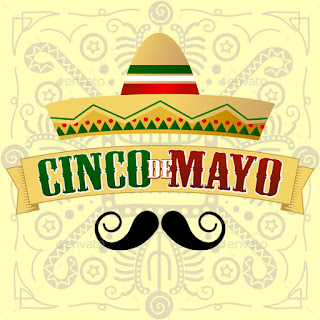Cinco de Mayo
Cinco
de Mayo, which isn’t widely celebrated in Mexico, commemorates an underdog
victory over France in the Battle of Puebla on
May 5, 1862. The victory was galvanizing for the Mexican forces — and for those
supporting them from afar — but it was short-lived, as France later occupied
Mexico for a few years. Still, Cinco de Mayo continued to be celebrated in
Puebla and, perhaps more significantly, by Mexican-Americans north of the
border.
The day is celebrated in the state of Puebla with parades, speeches, and re-enactments of
the 1862
battle, though it is not much noticed in most
of the rest of the country. In the mid-20th-century U.S., the celebration of
Cinco de Mayo became among Mexican immigrants a way of encouraging pride in
their Mexican heritage. Critics observed that enthusiasm for the holiday
celebration did not take off with a broader demographic until it was explicitly linked with the
promotion of Mexican alcoholic beverages and that many U.S. festivities tended
to both perpetuate negative stereotypes of Mexicans and promote excessive drinking.
Cinco de Mayo is not to be
confused with Mexican Independence Day, which falls on September 16. The latter holiday was
established in 1810, some 50 years before the Battle of Puebla occurred
within Mexico, Cinco de
Mayo is primarily observed in the state of Puebla, where Zaragoza’s unlikely
victory occurred, although other parts of the country also take part in the
celebration.
Traditions include
military parades, recreations of the Battle of Puebla and other festive events.
For many Mexicans, however, May 5 is a day like any other: It is not a federal
holiday, so offices, banks and stores remain open.
Today, revellers mark
the occasion with parades, parties, mariachi music, Mexican folk dancing and
traditional foods such as tacos and mole poblano. Some of the largest festivals
are held in Los Angeles, Chicago and Houston.

Comments
Post a Comment